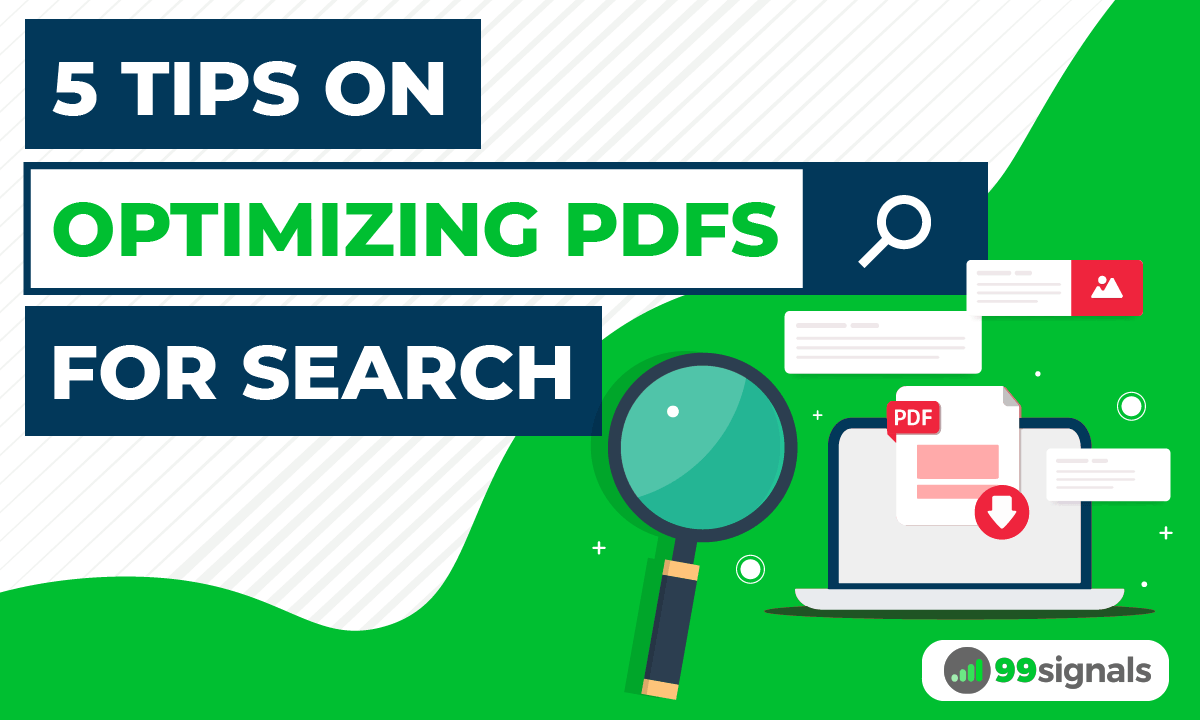The Google system can index, crawl, and rank PDF documents. Efficient OCR technology is used for text and image recognition, and documents are displayed in search results with the tag “PDF.” That is why it is essential to be able to optimize them competently. Making your files search engine friendly helps you achieve high-ranking search results. In this article, we will share five professional tips on optimizing a PDF to get the most out of this format.
When Should You Use a PDF?
In the presence of resources with the same content, Google prefers web pages over PDF files. However, there are situations when using files in this format is useful and even absolutely necessary for businesses. If you provide printable information to your customers or readers that should meet certain specifications, PDF is really needed because it maintains the original formatting. The use of this format includes, but is not limited to, the following areas:
Electronic books. PDF was originally developed for electronically displaying books, magazines, and other printed publications. You can place infographics, tutorials, guides, illustrations, and more on your site. Specification docs. As a rule, such files are quite extensive and contain a lot of valuable information, drawings, graphs, tables, and much more. PDF ensures that all this data is printed exactly as you intended it to be. Offline content. This format is the best option if you want your customers to access information without needing an Internet connection. White papers. White papers and marketing materials in which you can talk about your business and services need to reach your potential customers quickly. Therefore, providing such data in a printable PDF is a good idea.
There are many uses for PDF files. If your business operates or provides the items described above, the ability to optimize such documents is indeed a necessary skill.
5 Ways to Make Your PDFs SEO-Friendly
You are probably familiar with HTML internal optimization elements. PDF has its own counterparts that are used in the usual way, so you should have no problem making your files SEO-friendly.
1. Pick an SEO-friendly PDF file name
Some overlook the need to name files properly. However, search engines use titles to describe documents in the SERPs. If you want your files to appear as high up there as possible, insert relevant keywords into names. This information will be included in the URLs of generated documents and will be visible to search robots.
2. Write a Compelling Title and Meta Description
Each web page has a title and description that allow systems to find it based on user search queries. You can apply the same rules to your PDF files as well. It gives you control over what information appears in summary form in the search results. You can present your content to readers in a better light. At the same time, do not forget to follow the standard recommendations for the length of meta tags: titles are up to 70 characters, and descriptions are up to 160 characters.
3. Add Alt Text Descriptions for Non-text Elements
Alternative texts serve as additional descriptions for pictures, infographics, and photographs and may be necessary for visually impaired users. They are not visible to common readers but are used by various screen readers. Besides, such extra information improves rankings and helps search engines discover your content.
4. Build Links into PDF Files
The presence of internal and external links in PDF documents has the same effect on ranking as when working with web pages. With anchors, you refine the context, and with links, you help algorithms find and analyze your content. It is a mistake to think that PDF files are static objects. Many users think of them purely as printables, but you can increase discoverability with links. They also allow customers to find your other products by navigating from files to your company page.
5. Compress Your PDF to Reduce the File Size
File compression is necessary, so potential clients can open documents on portable devices. Specialized programs called PDF optimizers will remove images and objects from copies and thereby reduce their size. It is also recommended to left-align the text to ensure the best user experience when opening files on smartphones and tablets.
How to Create PDF Files
This format is good because you can open files on almost any device, even if specialized applications are not installed on it. However, you need a powerful editor to create a PDF document from scratch and work with the content. It is best to use online platforms that do not require the installation of programs on computers or smartphones. The choice of such services is huge, but we recommend PDFLiner, as it is beginner-friendly but at the same time provides access to all the necessary pro tools. Here’s how to create a PDF document using this platform:
texts; fillable fields; symbols; pictures; dates; checklists; watermarks; extra pages; signatures, and more.
Tools for annotating and converting a document to JPEG are also available. With PDFLiner, you can send the finished file to a recipient by email or link, protect it with a password, save it to your profile for further editing, or download it to your device.
Summary
The PDF format is not only convenient to use, but it can also be extremely handy for your business. The described tips for optimizing such documents are easy to apply, but they can significantly impact the ranking of your products in search results. The customer flow directly depends on your visibility, so use all available tools to simplify the process of finding your company.
26 Best Google Chrome Extensions for SEO 10 Best SEO Podcasts to Master the Art of SEO Google Search Operators: The Ultimate List (38 Essential Commands)

